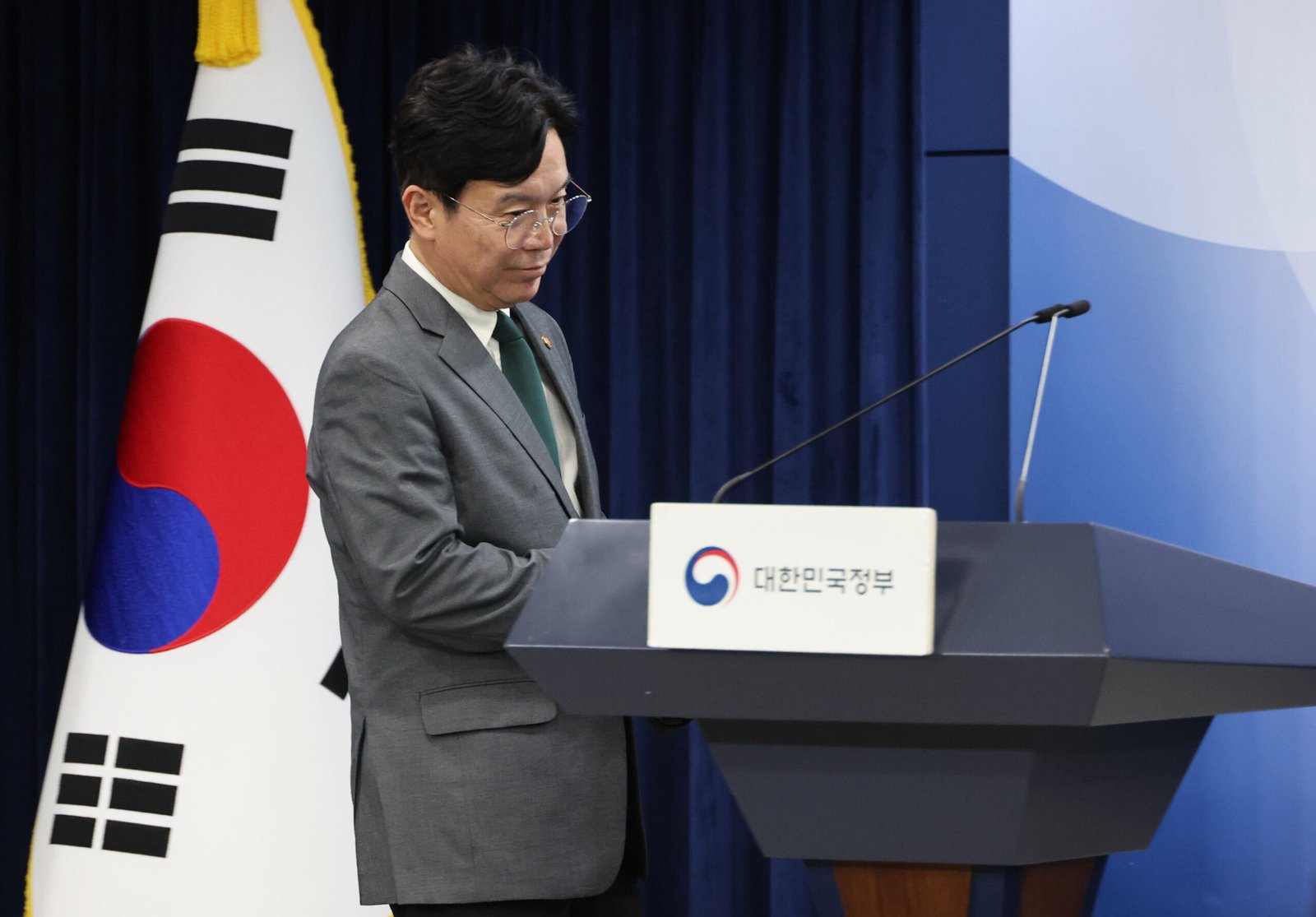Political Tensions and Economic Challenges in South Korea
South Korea is currently navigating a complex web of political and economic challenges that have sparked intense debate among policymakers and business leaders. The ruling party has recently taken steps to reverse a corporate tax cut that was introduced during the previous administration, which has led to renewed discussions about the country’s fiscal health and long-term economic strategy.
The Democratic Party’s floor leader has criticized the former Yoon Suk-yeol administration for what they describe as “emptying the national coffers.” This criticism is based on a reported revenue shortfall of 87 trillion won over the past two years, along with a national debt-to-GDP ratio of 54.5% this year—marking a significant increase that surpasses the average for non-reserve currency countries for the first time. However, this narrative does not fully capture the broader context of the tax policy change.
The 1 percentage point corporate tax reduction was actually passed with bipartisan support. At the time, Democratic Party leader Lee Jae-myung acknowledged that the opposition had accepted the compromise after careful consideration, emphasizing that it was done in the interest of the greater good. This suggests that the issue is more nuanced than the current political rhetoric implies.
The deterioration of South Korea’s public finances can be traced back to the previous Moon Jae-in administration, which significantly increased the national debt by adding over 400 trillion won in debt over five years. This amount exceeds the combined total accumulated under previous presidents such as Kim Dae-jung, Roh Moo-hyun, and Lee Myung-bak. The rise in national debt began under Moon, and the current administration is now pursuing its own expansionary fiscal agenda. While political blame-shifting may offer short-term advantages, it often obscures the larger picture of the country’s economic trajectory.
Corporate tax revenue typically rises when company earnings improve. The sharp decline in recent years is not due to lower tax rates but rather to a drop in corporate profits. This is evident from Samsung Electronics, which recently posted its first loss in 52 years. If the goal is to increase revenue, the government should focus on reducing regulatory constraints to help businesses grow. Instead, the Democratic Party is pushing forward with legislation like the Yellow Envelope Bill and amendments to the Commercial Act, which critics argue will place additional burdens on companies.
Another pressing challenge for South Korea lies in ongoing tariff negotiations with the United States. Without a deal to reduce duties below 15%, core export sectors such as automobiles risk losing ground in the U.S. market. A breakdown in these talks could have far-reaching consequences, affecting not only firms but also jobs and consumer demand domestically.
This urgency has prompted top trade officials in Seoul to travel as far as Scotland to try to gain more time in negotiations with U.S. Commerce Secretary Howard Lutnick. However, back in Seoul, both the ruling party and the administration seem more focused on appeasing their political base through policies that increase costs for the private sector.
If U.S. tariffs remain above 15%, Korean companies are likely to face significant challenges. A more pragmatic approach would be for Seoul to alleviate the burden by lowering domestic tax rates. Instead, businesses are caught in a two-front squeeze: rising taxes at home and the threat of a tariff wall abroad.
For now, both the Trump administration and the South Korean government appear to be tightening the screws on Korean firms—just from opposite sides. This situation highlights the need for a more balanced and strategic approach to economic policy that addresses both domestic and international challenges effectively.
 Info Malang Raya Its All About World News
Info Malang Raya Its All About World News



